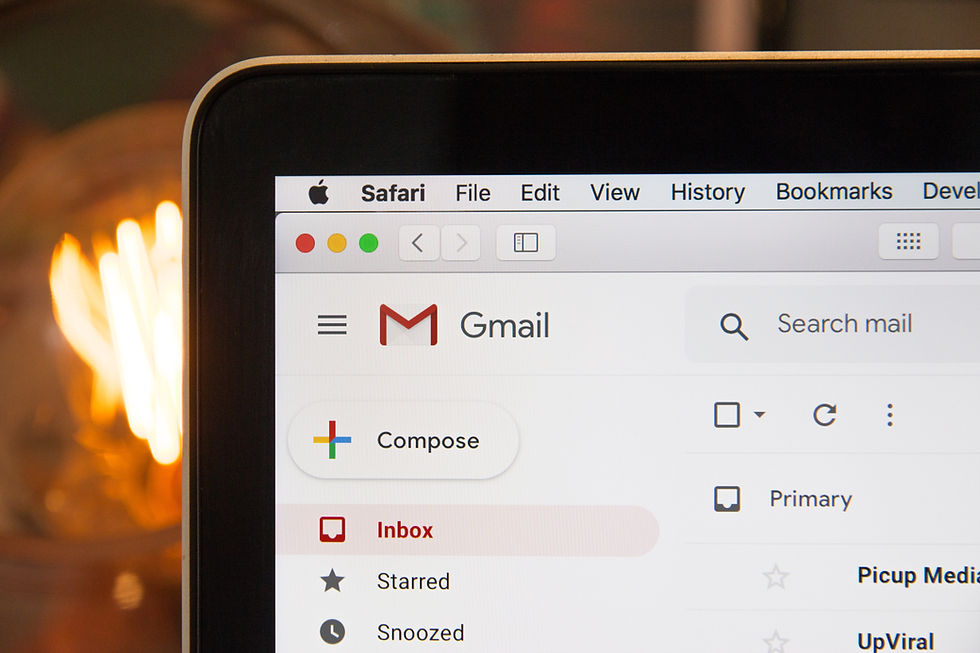The Cold War – Cold Outreach for Business.
- Geraldine
- Aug 26, 2022
- 4 min read
Sending an email to a recipient who does not know you or has no previous relationship with you (or your company) is, in essence, a "cold" encounter and can be daunting.
Cold emailing is more complex than other forms of contact because you are yet to establish a relationship with your recipient, and you don't have nonverbal input, so you can't change your strategy in real-time.
Email Cold Prospects, get responses, and stay motivated?!
Yes, you can, and here are our five tips to get you going.
Even the most confident salesperson might feel like they are fighting a losing battle when dealing with the unknown. However, cold emailing can be effective, as evidenced by those people who have developed careers and founded start-ups with nothing more than cold emails.
Still, it did not happen overnight, and it certainly did not occur because someone woke up one morning and began to send random emails left, right, and centre. If that's the approach you are considering, you'd better go to war unarmed, as half your battle has already been lost.
Cold emailing necessitates researching your prospect, producing concise content, and consistent follow-up.
Here are our tips to get you started while preparing for battle in the war of cold emailing.
Tip #1 – Short & Sweet – Get to the Point.
Author Elmore Leonard Short - "When you write, try to leave out all the parts readers skip."
Longwinded emails are a no-go and will lose your reader's interest.
Keep things short - This helps to ensure the messages you're sending aren't overwhelming your readers. Time is money, and there is no time to sit around reading lengthy emails, not even mentioning the fact that long emails tend to be nothing but boring. Keep your email to a maximum of 200 words.
An ideal cold email identifies a possible problem area for the reader, offers a solution, and finally asks for something, for example, prospective business, in return.
Remember to ensure you don't sound like a template - personalisation is critical.
Tip #2 – "Do I know you?"
To your cold prospect, you are a full-blown stranger. You've done your homework, so you know a bit about them. But if you turn that table around, they still don't have the vaguest idea of who you are. The question to them remains. Why should they trust you?
Find common ground by proper research of your prospect. A mutual connection is massive social proof presented on a silver platter, and you should use it. If any tangible reference is relevant to your reader, utilise it to provoke a reaction and feeling of trust.
This is not a concern if you have little or no tangible connection. Highlighting how you aided your well-known clients is a great strategy to develop credibility and trust.
Tip #3 – "What's in it for me?"
When businesses reach out to people, the reader is interested in what they can gain from doing business with you. That applies to any form of outreach, not only cold emailing.
The first thing your reader will ask is, "what's in it for me?"
Your subject line plays a vital role here, and your open rate depends on it. Your readers are likelier to engage when the subject line has a direct offer. Be clear of your intention by not leaving your readers guessing—state what you aim to achieve and how your proposition will benefit your recipient.
Tip #4 – Call to action.
Make it evident that you want to follow through on your proposition.
Don't just tell your prospect what you want to do next; make it easy to act on your request. If you wish to arrange to meet, make it clear by adding a link to your calendar showing your availability.
Tip #5 – "Forget-me-not."
Every follow-up increases the response rate!
We are human, and we get busy, so the chances of your cold email going unnoticed will remain. As a result, following up is essential and required regularly.
Look at your inbox for a second; I bet a few emails are waiting to be dealt with. That is life, so remember, outside of your proposition, your prospect also has other emails to tackle.
Give them a gentle nudge by sending your follow-up email once you've given them enough time as a reminder of your initial email or ask to book a quick video or conference call for more details.
Trial and error.
Cold emails can feel so negative, and to be frank, you probably won't get a 100% success rate the first time but be sure to know that trial and error forms part of your strategy.
In the end, it still is a game of patience. So, in the meantime, continue doing outreach, review your success, and find other ways or methods to ask for business.
Most importantly, don't give up!
Cold emailing brings the terrible reality of rejection and slow-to-close sales prospects. If you're willing to learn from rejection, there are plenty of opportunities. However, each "no" represents a missed chance to understand your future clients' desires better.
Cold emailing works: Otherwise, we wouldn't be writing about it, would we?


Comments